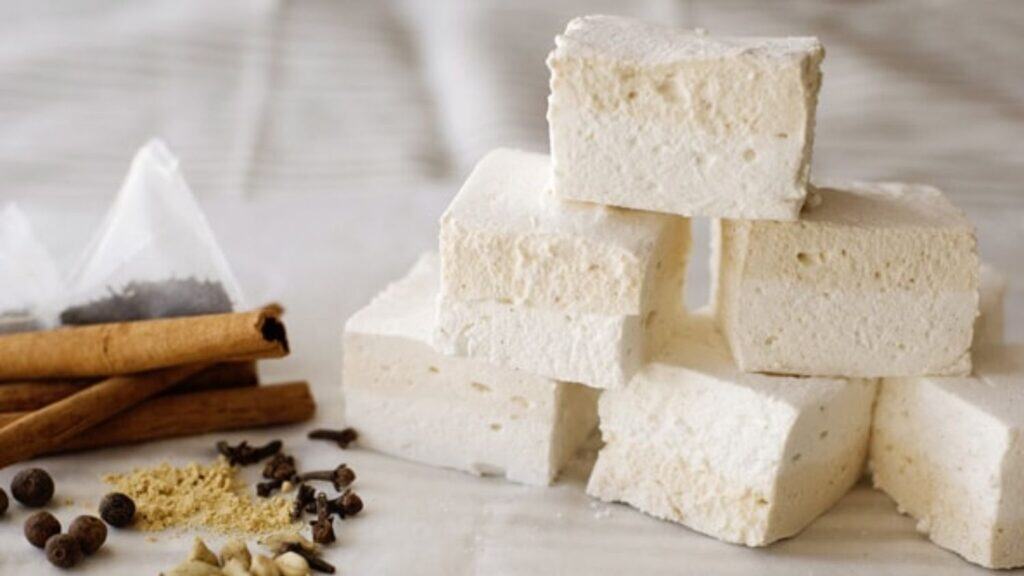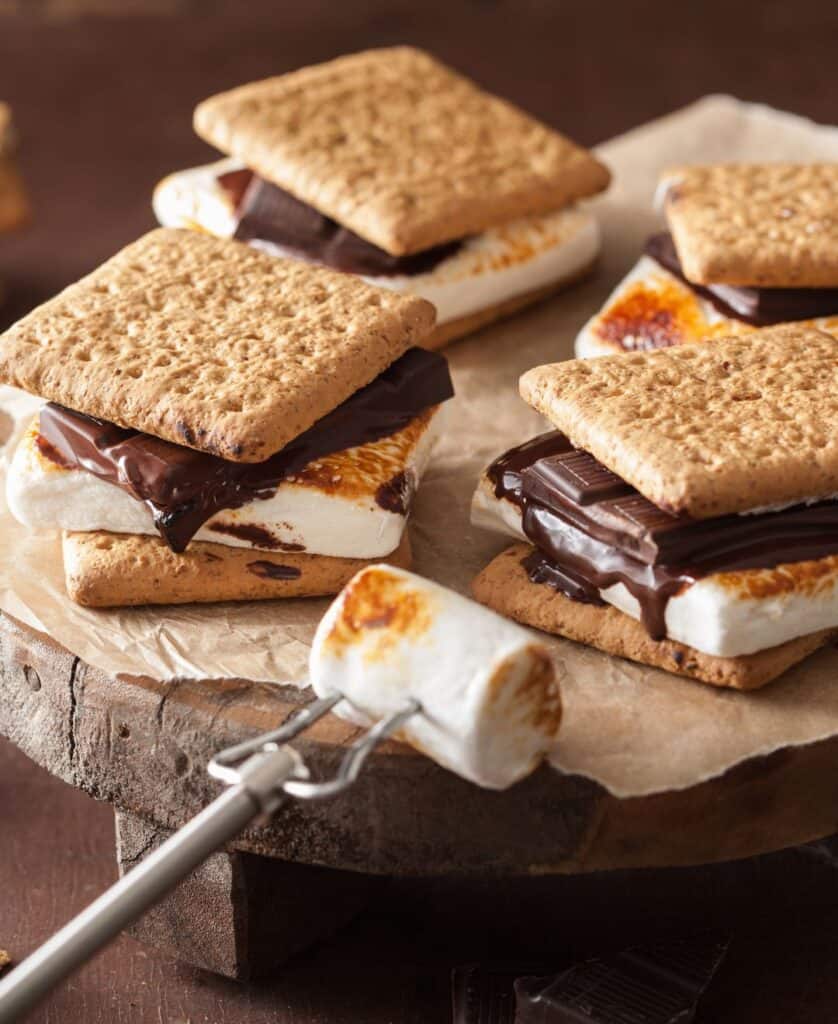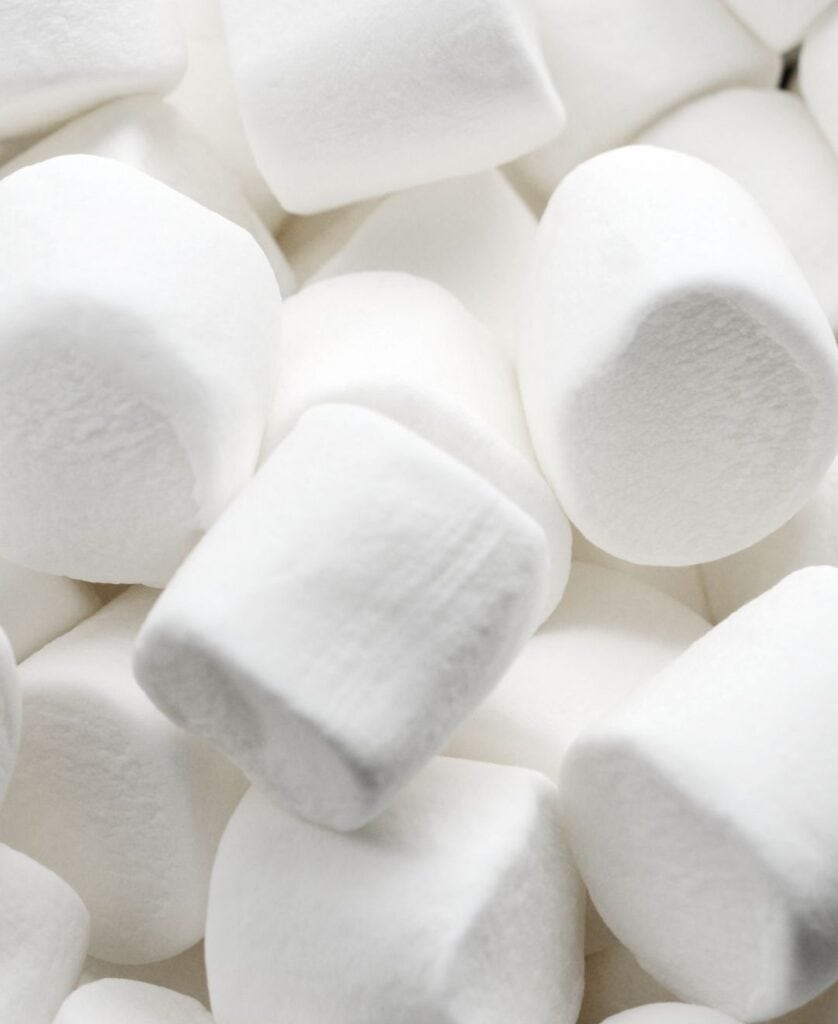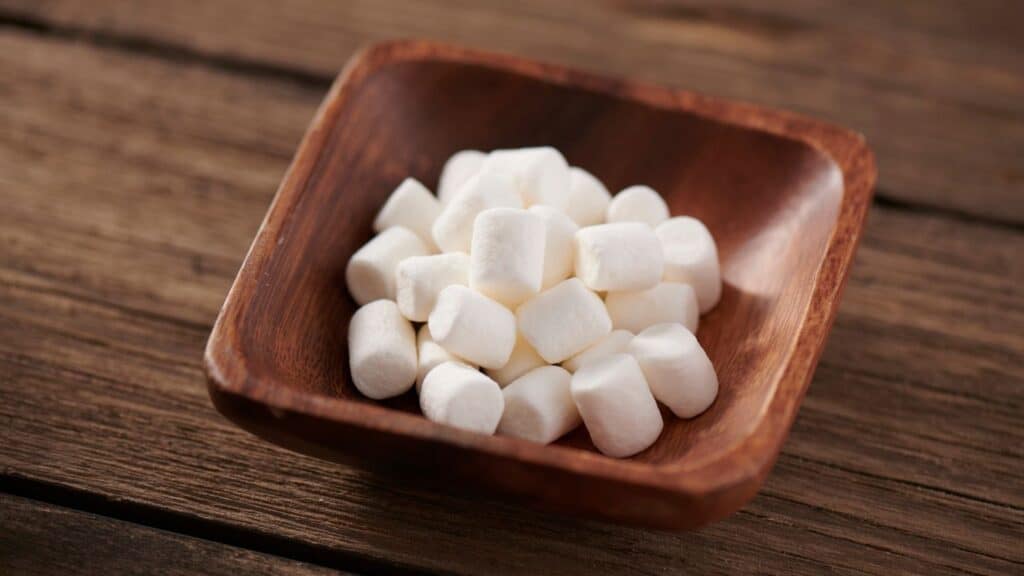De las fogatas al cacao, de los cereales de desayuno a los dulces empalagosos, los malvaviscos son la definición de la nostalgia. Pero, ¿desde cuándo crecer significa no poder disfrutar de este favorito de la infancia? Ha llegado el malvavisco gourmet.
La “newstalgia”, la reintroducción o reimaginación de productos clásicos para los consumidores de hoy, ha sido una de las tendencias de alimentos y de bebidas más fuertes de los últimos años. Pocos alimentos han seguido esta tendencia como los malvaviscos gourmet o especiales.
Lejos de lo que uno recuerda, con infusiones alcohólicas y elevados perfiles internacionales como el chai, el ube o el chocolate caliente mexicano, estos malvaviscos saborizados consiguen satisfacer los paladares tanto del niño interior como del adulto que paga impuestos.
Pero, ¿hacia dónde se dirige esta evolución y qué puede significar para los desarrolladores que buscan ampliar estas delicias artesanales y ofrecer los mejores malvaviscos gourmet a mayor escala?

La Evolución de los Malvaviscos
Lo creamos o no, los malvaviscos se consideraban un lujo propio de la realeza desde sus orígenes.
De hecho, cuando se crearon los primeros malvaviscos en el antiguo Egipto, en torno al año 2000 a.C., esta dulce golosina estaba reservada a los faraones y los dioses.
Su versión mezclaba miel con la savia de la malva silvestre de los pantanos (de ahí su nombre).

Sin embargo, algo parecido al malvavisco que conocemos y amamos hoy no tomó forma hasta casi otros 4000 años después, cuando, en el siglo XIX, los fabricantes de dulces franceses empezaron a batir la savia del malvavisco con azúcar y claras de huevo. Al mismo tiempo, los médicos utilizaban una receta similar para fabricar un caramelo medicinal duro parecido al merengue que se utilizaba para curar heridas, aliviar el dolor de garganta y suprimir la tos.
En 1927, el Manual de las Girl Scouts dio a conocer al mundo los “Some Mores” y, a mediados de siglo, los nuevos procesos de extrusión estandarizaron los malvaviscos hasta convertirlos en el producto que los consumidores han disfrutado durante generaciones.
Más de medio siglo después, los malvaviscos artesanales están transformando esta golosina cotidiana en un dulce de primera calidad.
¿Qué Define a los Malvaviscos Gourmet?
En 2023, el mercado norteamericano de malvaviscos alcanzó más de 362,000 millones de dólares y se prevé que alcance la impresionante cifra de 644,720 millones de dólares en 2032.
Los malvaviscos gourmet tienen la oportunidad de desempeñar un papel importante en la expansión de esta categoría. Esto empieza por reconocer y recrear lo que define y separa a los malvaviscos gourmets del resto.
“Creo que, al menos en el mercado de la Unión Europea, los malvaviscos gourmet se utilizan como vehículo para explorar una variedad de sabores y texturas interesantes”, afirma Susan O’Shaughnessy, Sr. Scientist – EMEA/APAC Applications de Edlong.
“No es frecuente encontrar un color, sabor o textura uniformes en estos malvaviscos hechos a mano. Por ejemplo, un malvavisco de limón puede tener una cuajada de limón que lo atraviesa, o uno de coco puede tener una cobertura de coco tostado y sabor a coco por todas partes.”
Añade que estos malvaviscos artesanales se caracterizan por su textura blanda, suave como una almohada y pegajosa, que les ayuda a destacar en comparación con los pequeños dulces cilíndricos a los que están acostumbrados los consumidores.
Según Peter Kern, Junior Flavorist de Edlong, conseguir una textura “premium” no sólo depende de la elección de los ingredientes, sino también del proceso y la escala de producción. “Pensemos en los malvaviscos tradicionales: contienen gelatina, que es una proteína. Esta proteína funciona en los malvaviscos como el gluten en el pan. Es decir, añade estructura, ayuda a que se estire bien y contribuye en gran medida a la aireación. Luego está el proceso de calentamiento, que proporciona aún más burbujas, dando a estos malvaviscos artesanales la textura perfecta. Sin embargo, esto puede plantear problemas a la hora de escalar.”
Explica que los malvaviscos más procesados y producidos en masa suelen requerir estabilizadores y agentes aglutinantes como el huevo para que mantengan su textura, e incluso eso puede convertir la experiencia de los malvaviscos especiales en algo todavía nostálgico, sólo que menos lujoso.

Sin embargo, Kern no cree que esto signifique que no se pueda conseguir un malvavisco de calidad superior fuera de las tiendas artesanales, sino que se trata de encontrar un equilibrio entre la textura y el sabor y basarse en la ciencia de lo que ya hace que los malvaviscos sean tan especiales.
Sweet Browns en Malvaviscos Gourmet
“Independientemente de que, como yo, se obsesione por dorar a la perfección los malvaviscos, o de que sea de los que prefieren la variedad totalmente carbonizada, que es con la que suelo acabar, existe una razón biológica profundamente arraigada por la que los malvaviscos tostados saben tan bien”, afirma Kern.
Y continúa: “Estamos predispuestos a amar el sabor de los alimentos cocinados, por no hablar del azúcar. Además, las grandes moléculas, llamadas melanoidinas, creadas a partir de la caramelización y las reacciones de Maillard del azúcar y las proteínas crean una sensación en boca más rica e indulgente que puede imitar la percepción de la grasa. Realmente es el hackeo definitivo del sistema de recompensa del cerebro.”
Como se explica detalladamente en un artículo reciente, este pardeamiento es una razón importante por la que los perfiles marrones dulces (o sweet browns) son tan apreciados y la forma ideal de convertir los malvaviscos en gourmet.
“Cuando se trata de perfiles de postres indulgentes, hay tantos sabores diferentes de malvaviscos que puedes probar”, dice O’Shaughnessy.
“Por supuesto, hay sabores clásicos, como la el cheesecake, que funcionan bien y son fáciles de realzar con ingredientes como el limón o la albahaca, pero los sabores sweet browns, como el moca, el tiramisú y el caramelo, combinan muy bien. También puedes experimentar con sabores de malvaviscos como miso, ron de vainilla y malvaviscos rellenos de chocolate. Puede sonar a tópico, pero las posibilidades son infinitas.”

Apoyándose en la creatividad culinaria, Edlong creó una serie de malvaviscos gourmet utilizando sus sabores sweet browns para crear deliciosos perfiles, entre los que se incluyen:
Crujiente de Praliné:
- Natural Dark Chocolate Flavor #614 @ 0.5%
- Cobertura: Natural Praline-Type Flavor #1412596 @ 0.9%
Ron de Coco Tostado:
- Natural Vanilla Rum-Type Flavor #1412628 @ 0.5%
- Natural Roasted Coconut Flavor #1412884 @ 0.5%
- Cobertura: Natural Dark Chocolate Flavor #614 @ 0.5%
S’mores:
- Natural Vanilla Whiskey-Type Flavor #1412896 @ 0.5%
- Cubierta: Natural Dark Chocolate Flavor #614 @ 0.5%; dilución al 10% de aceite de alquitrán de abedul al 0,01%.
O’Shaughnessy cree que estos auténticos sabores sweet browns y otros son una excelente opción para los desarrolladores que buscan escalar o añadir perfiles premium a sus malvaviscos saborizados.
“Cuando se elaboran malvaviscos saborizados gourmet, hay muchas formas en que los sabores pueden ayudar a conseguir el objetivo, pero hay dos que realmente destacan. En primer lugar, a veces no se dispone de las instalaciones o la capacidad productiva para añadir un ingrediente original, como por ejemplo el caramelo. Los sabores permiten superar estos obstáculos e incorporar o estratificar estos perfiles. La segunda es ayudar a potenciar o realzar el sabor de un ingrediente. Por ejemplo, está haciendo una inclusión, pero el sabor no destaca; sin embargo, aumentar los ingredientes podría ser demasiado costoso o afectar negativamente a la estabilidad o textura del producto. Los sabores permiten realzar los perfiles existentes para una experiencia aún más gourmet.”
Contáctenos si desea saber como nuestras soluciones de sabor pueden ayudarle a desarrollar su siguiente innovación en malvaviscos gourmet.
Sobre los Autores:
Topics: Sabores Lácteos DulcesSabores Lácteos Dulces
Resource Type: Artículo
Resource Region: EUUS

